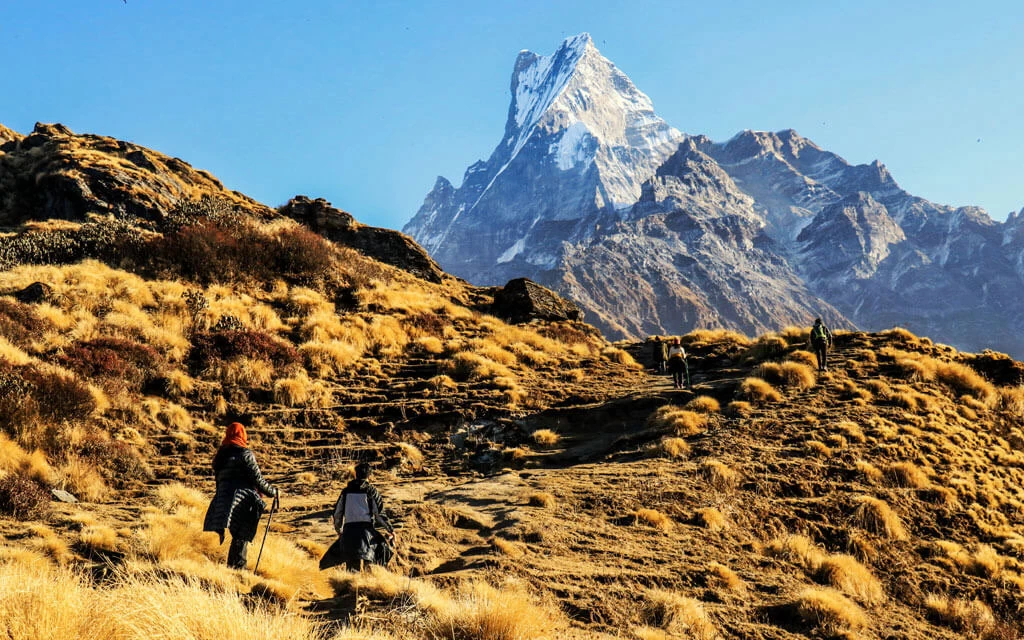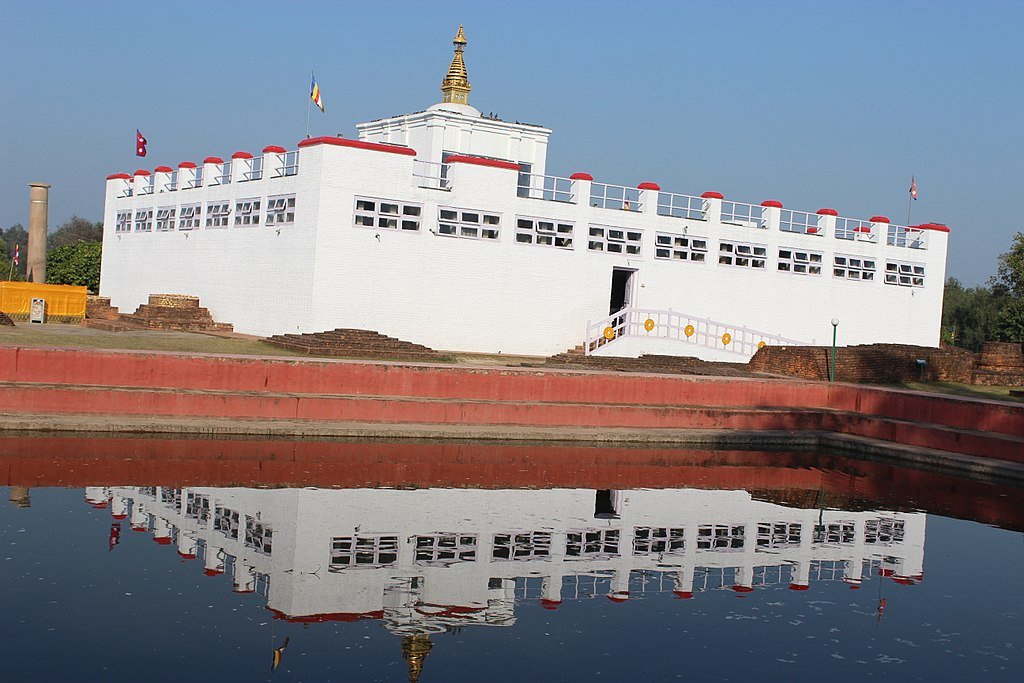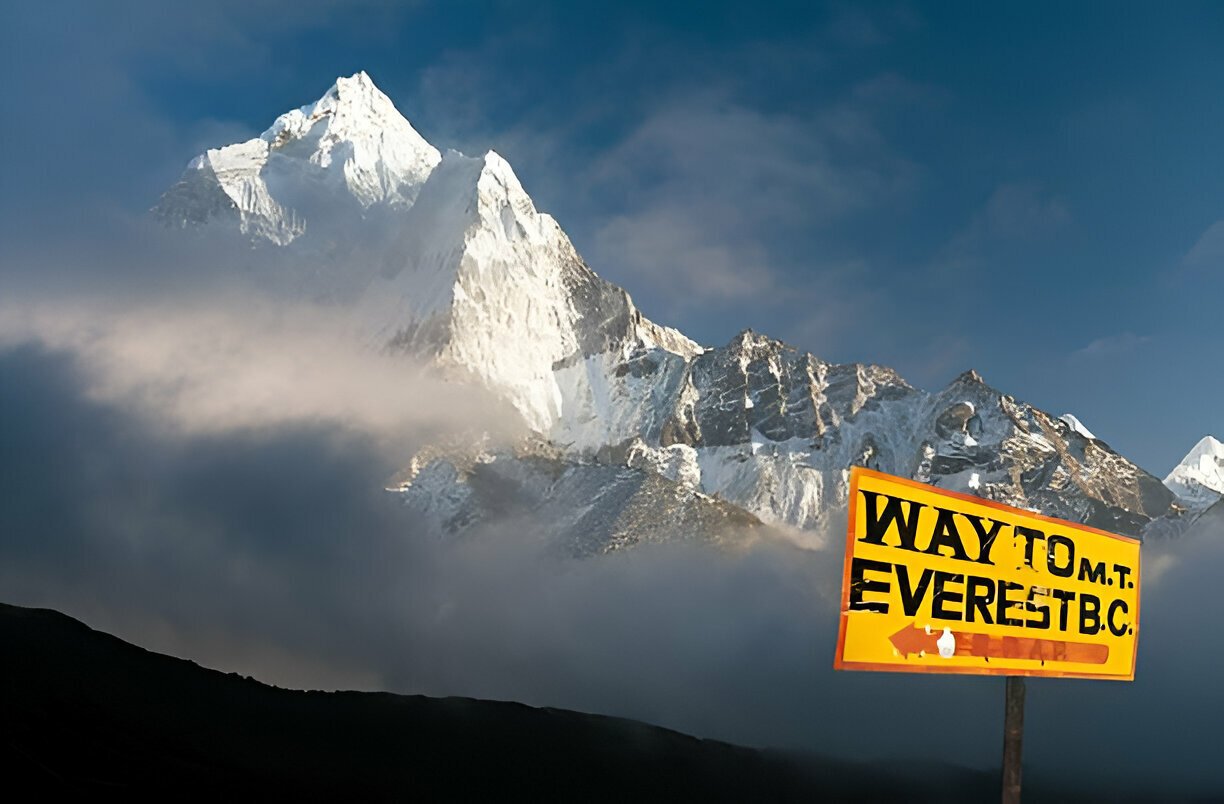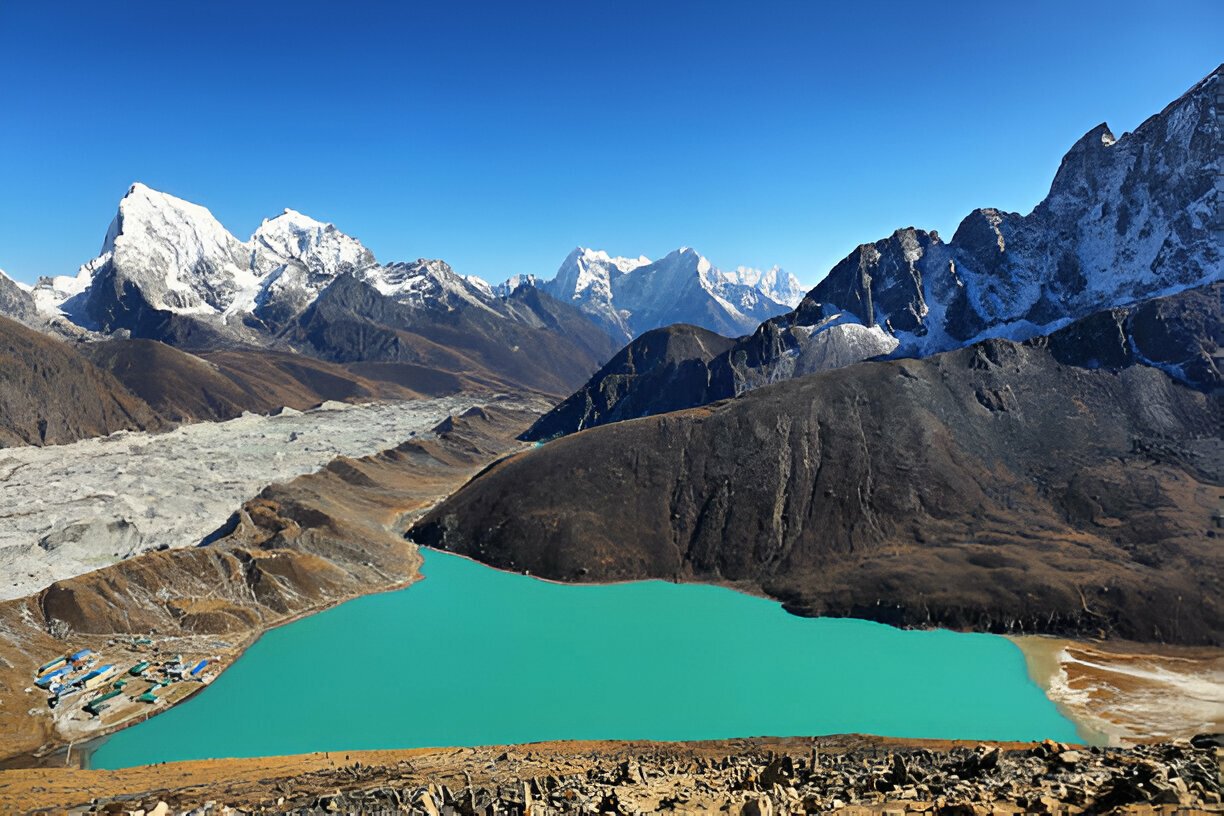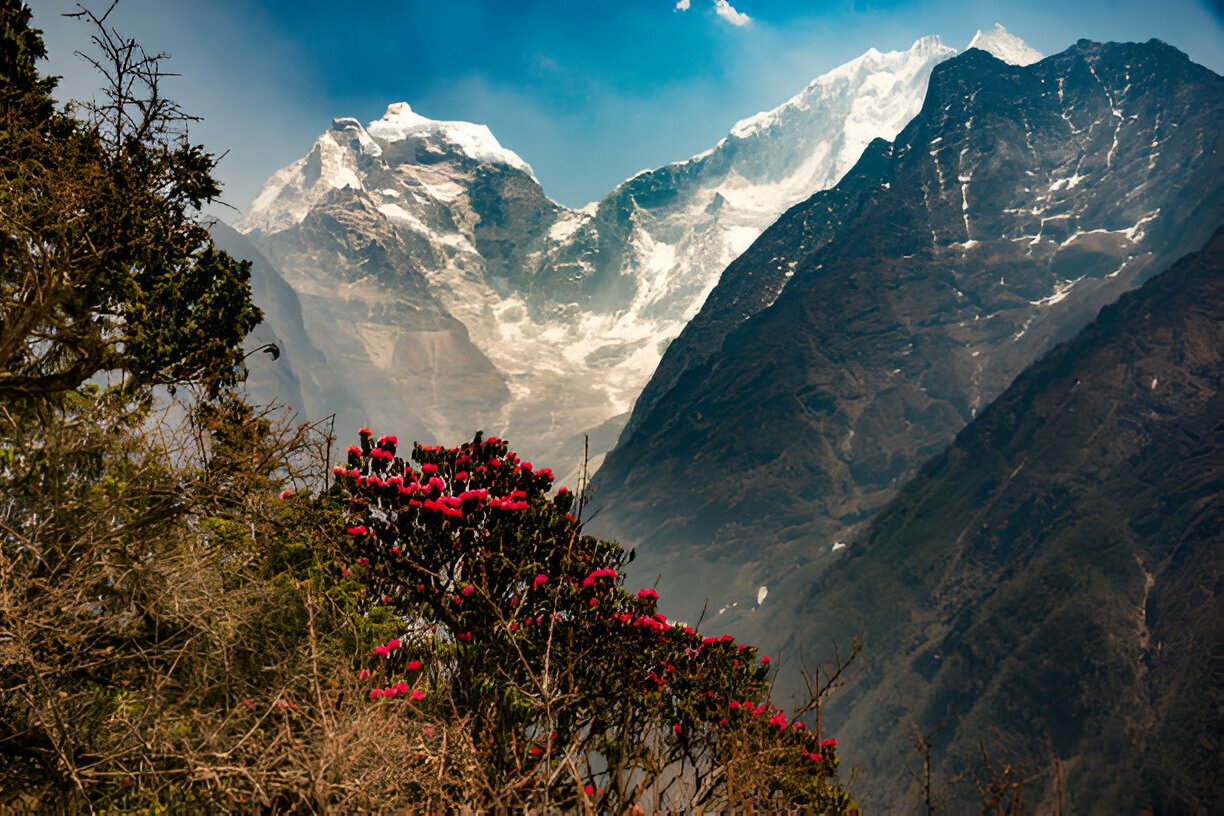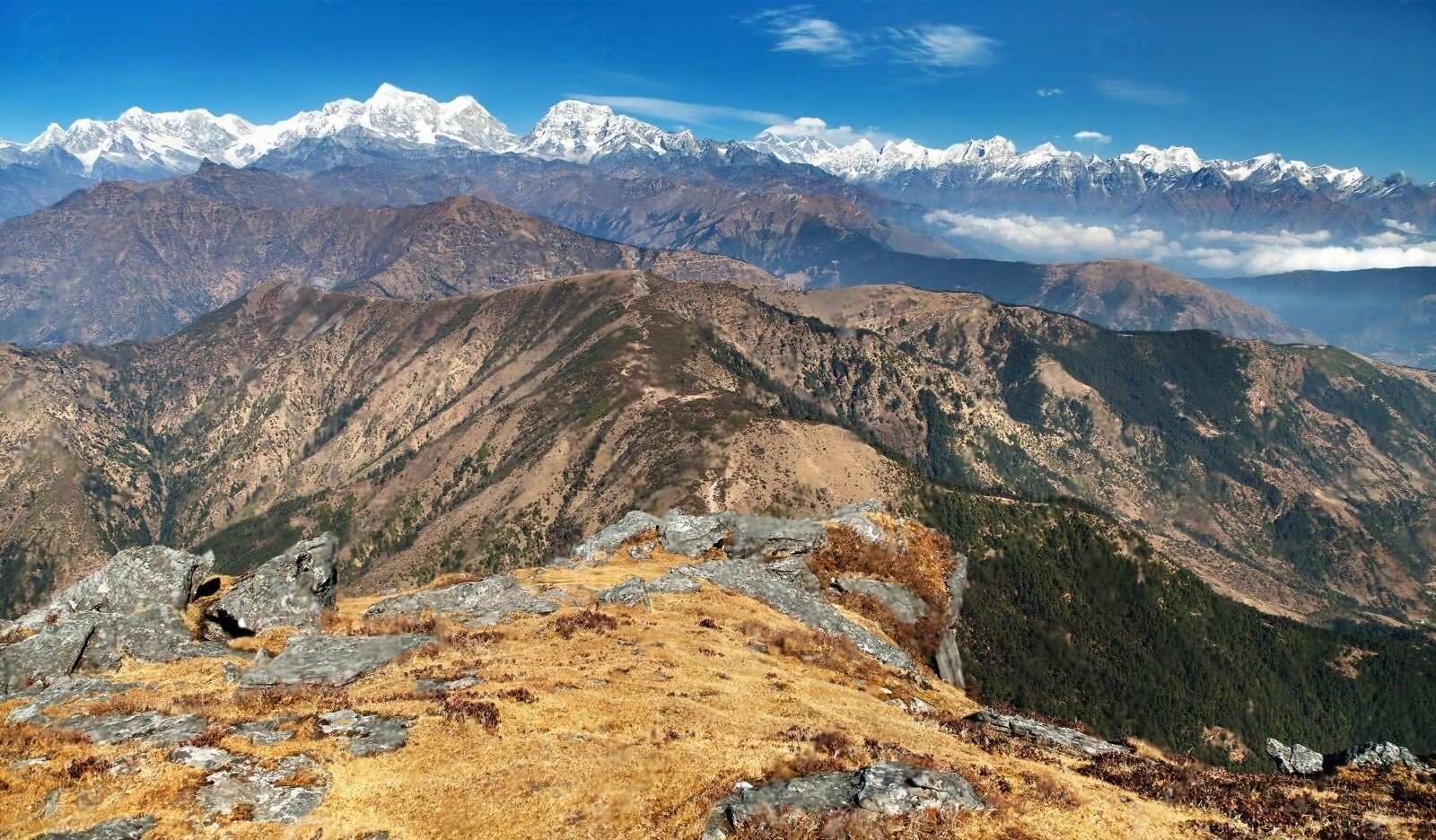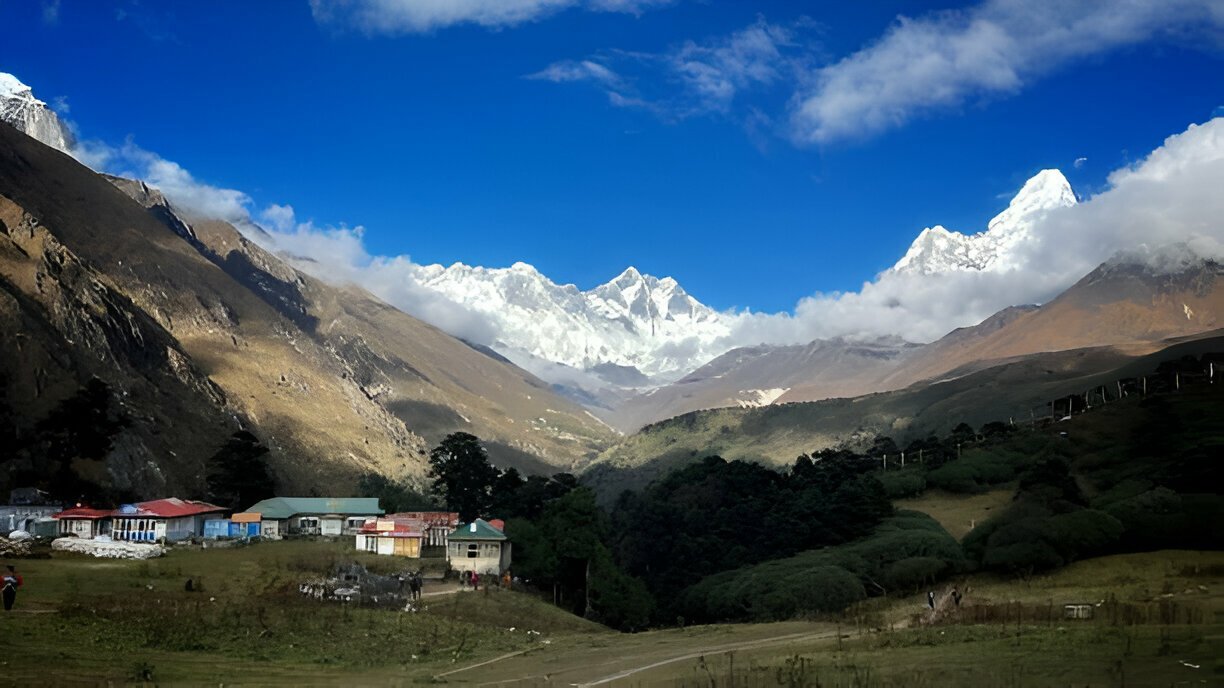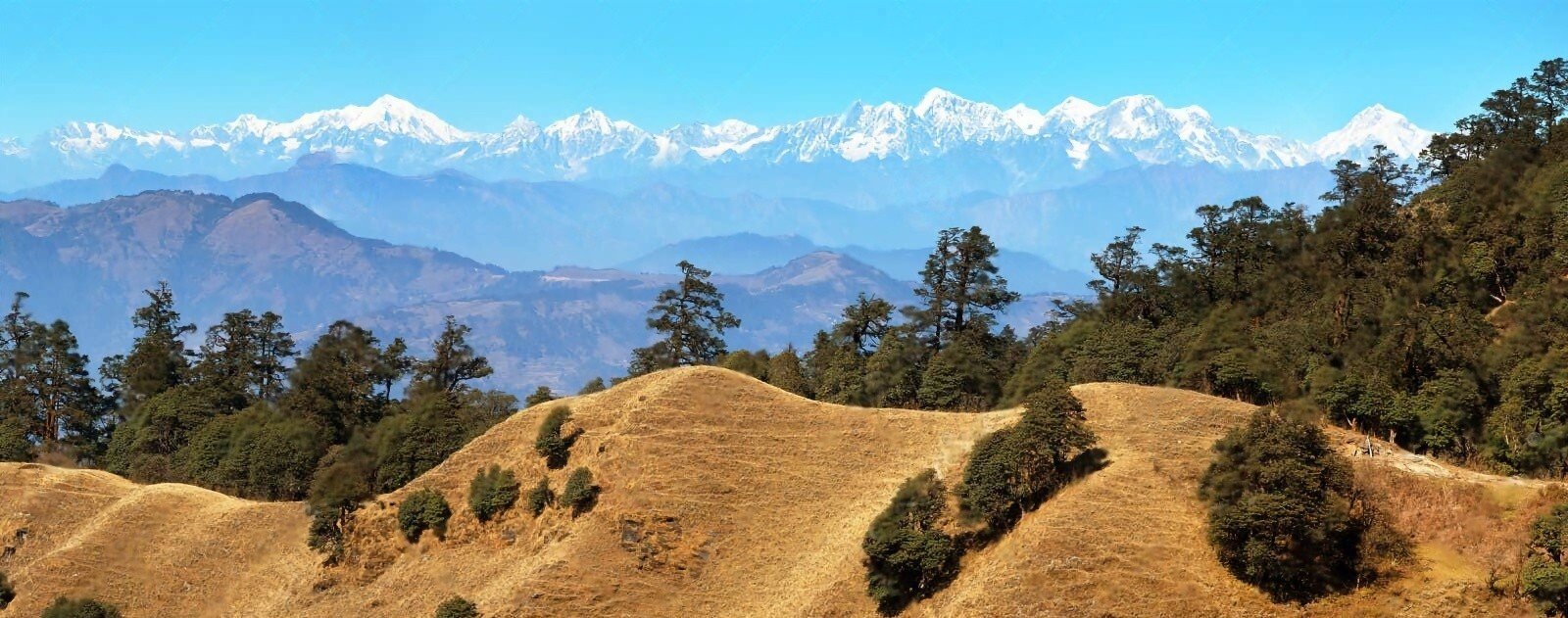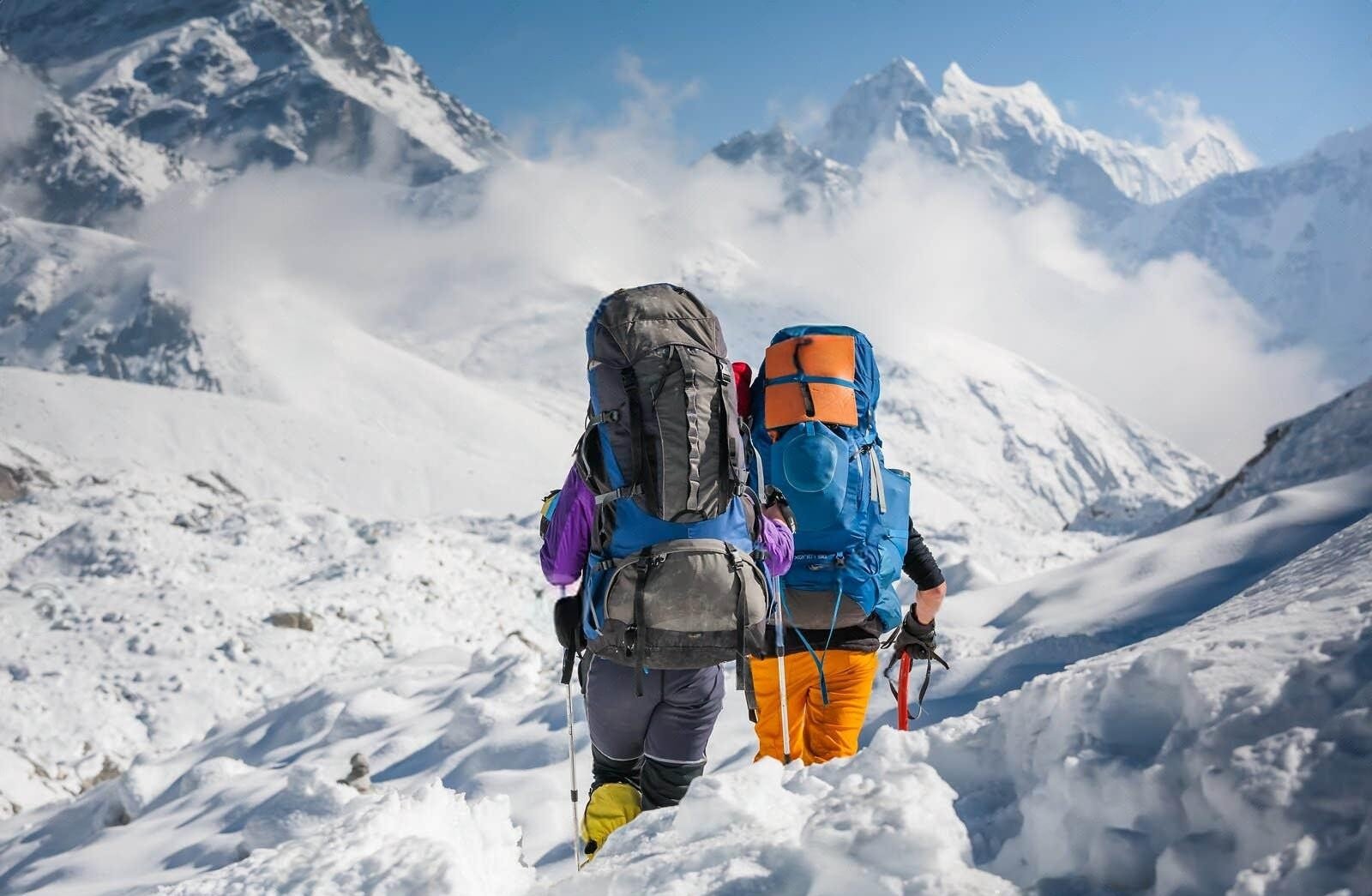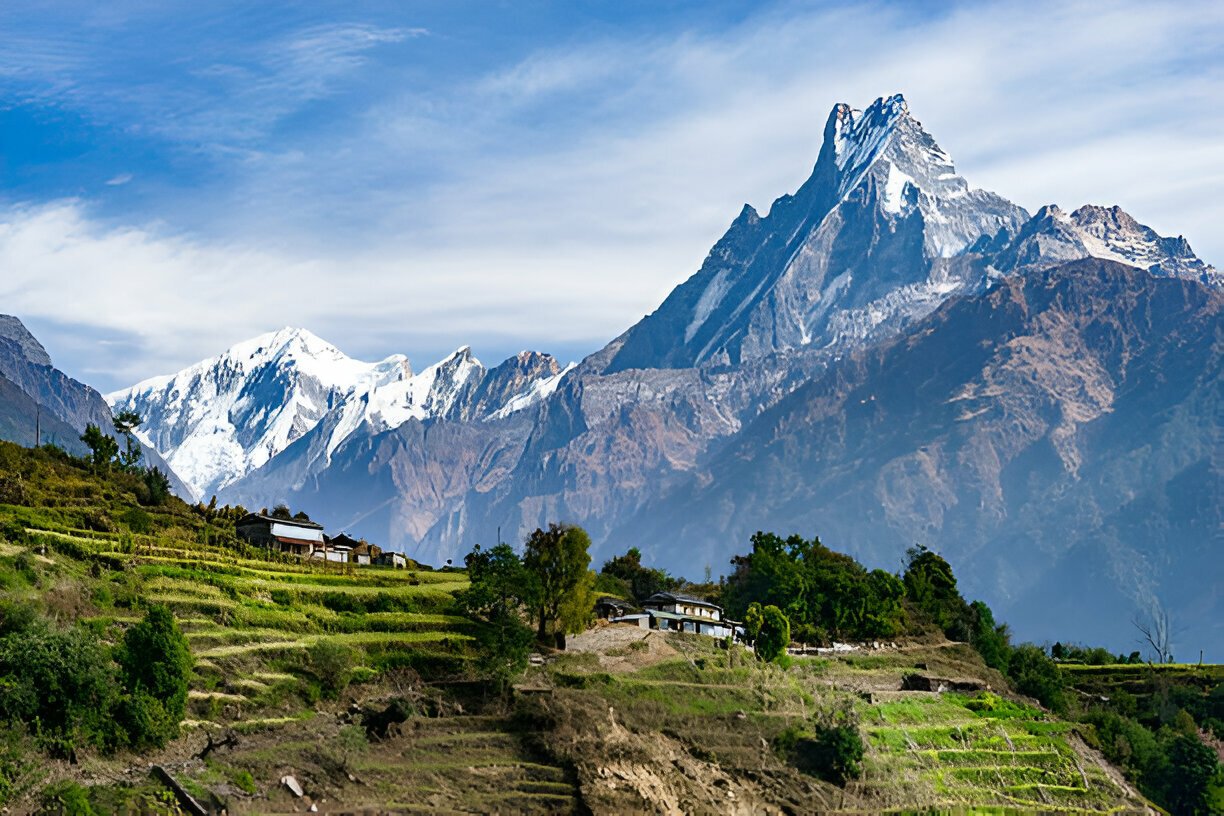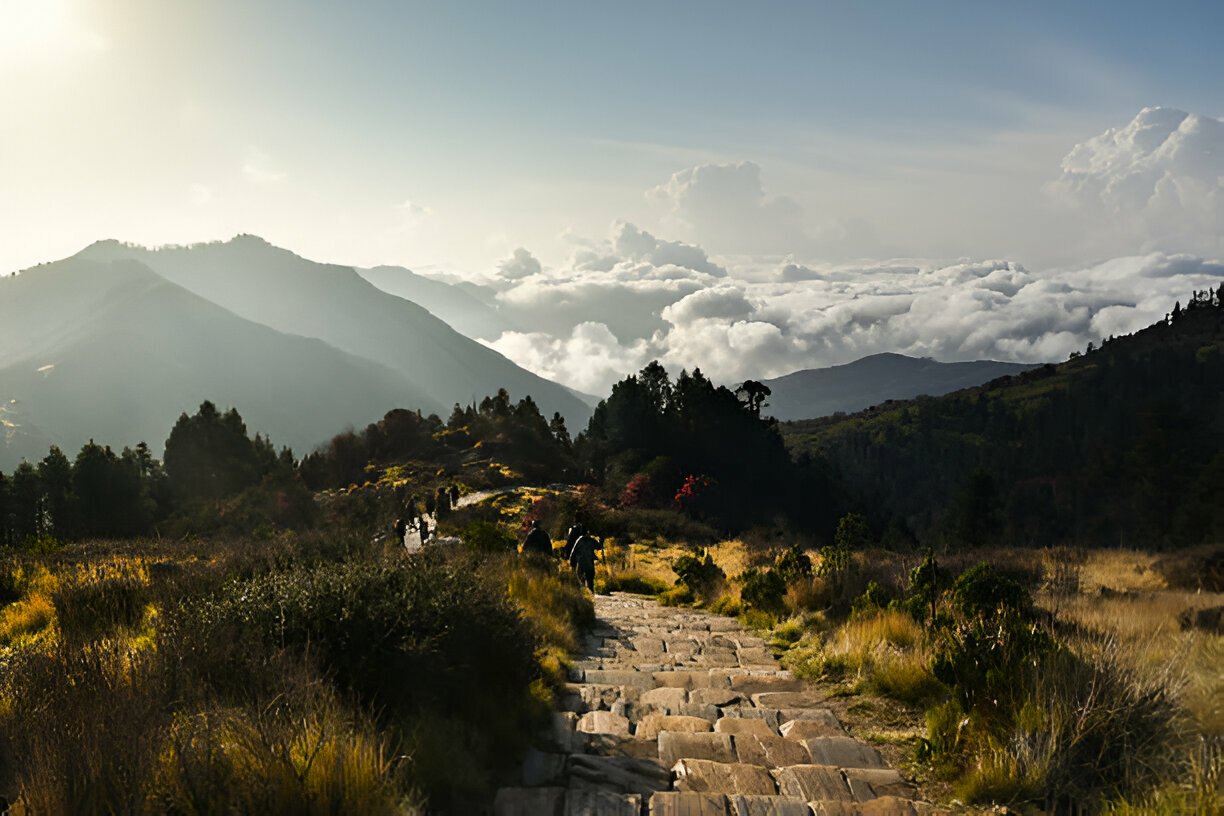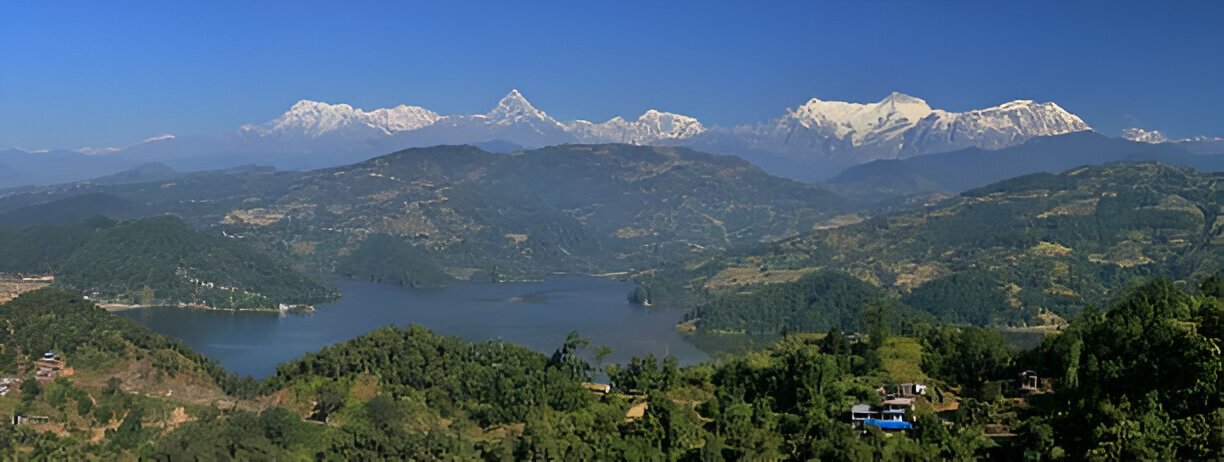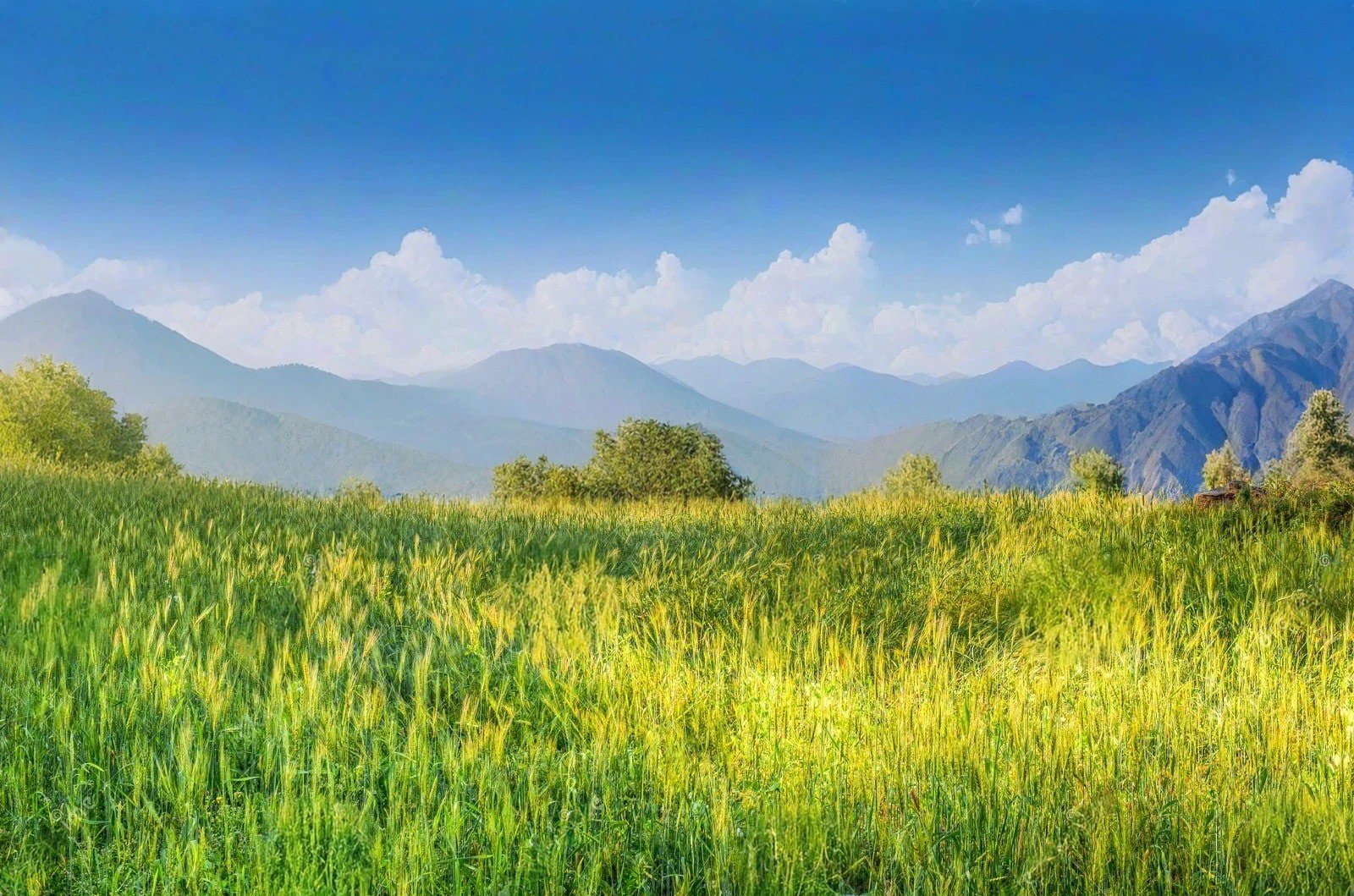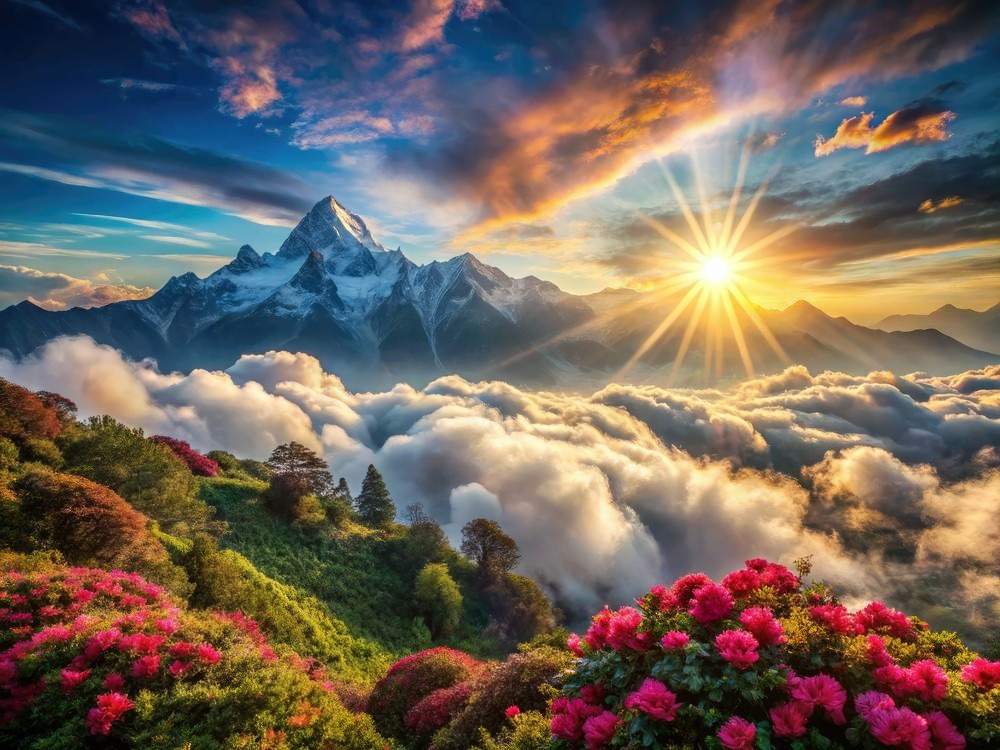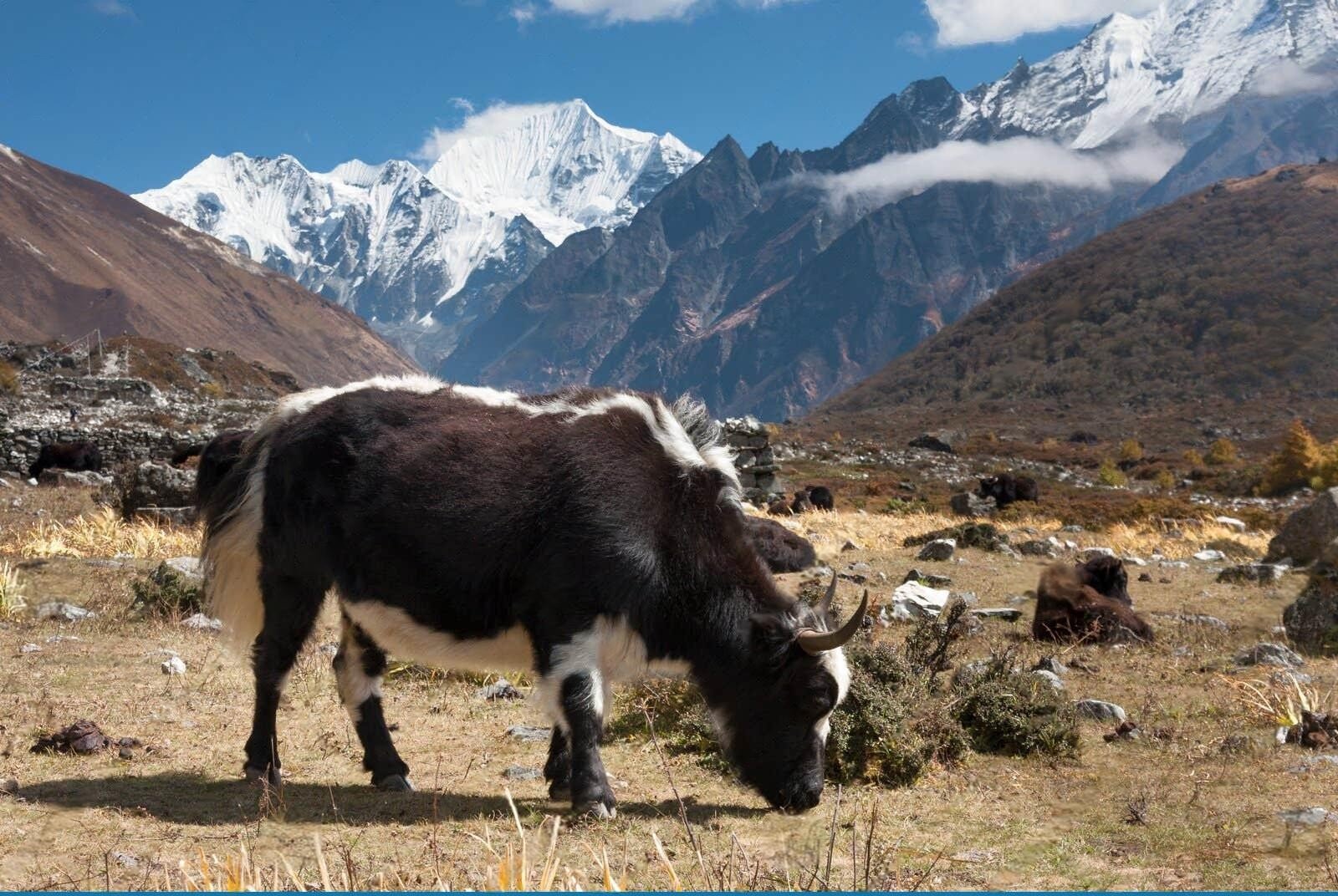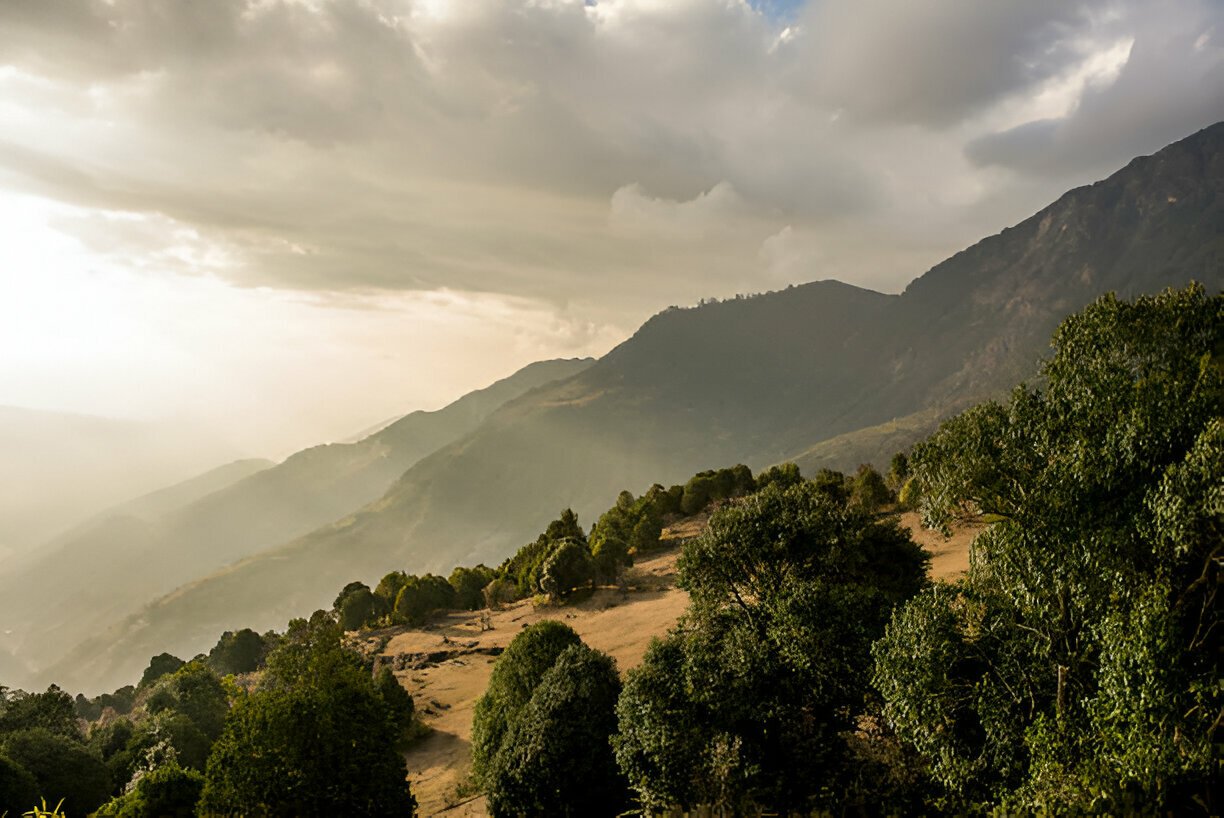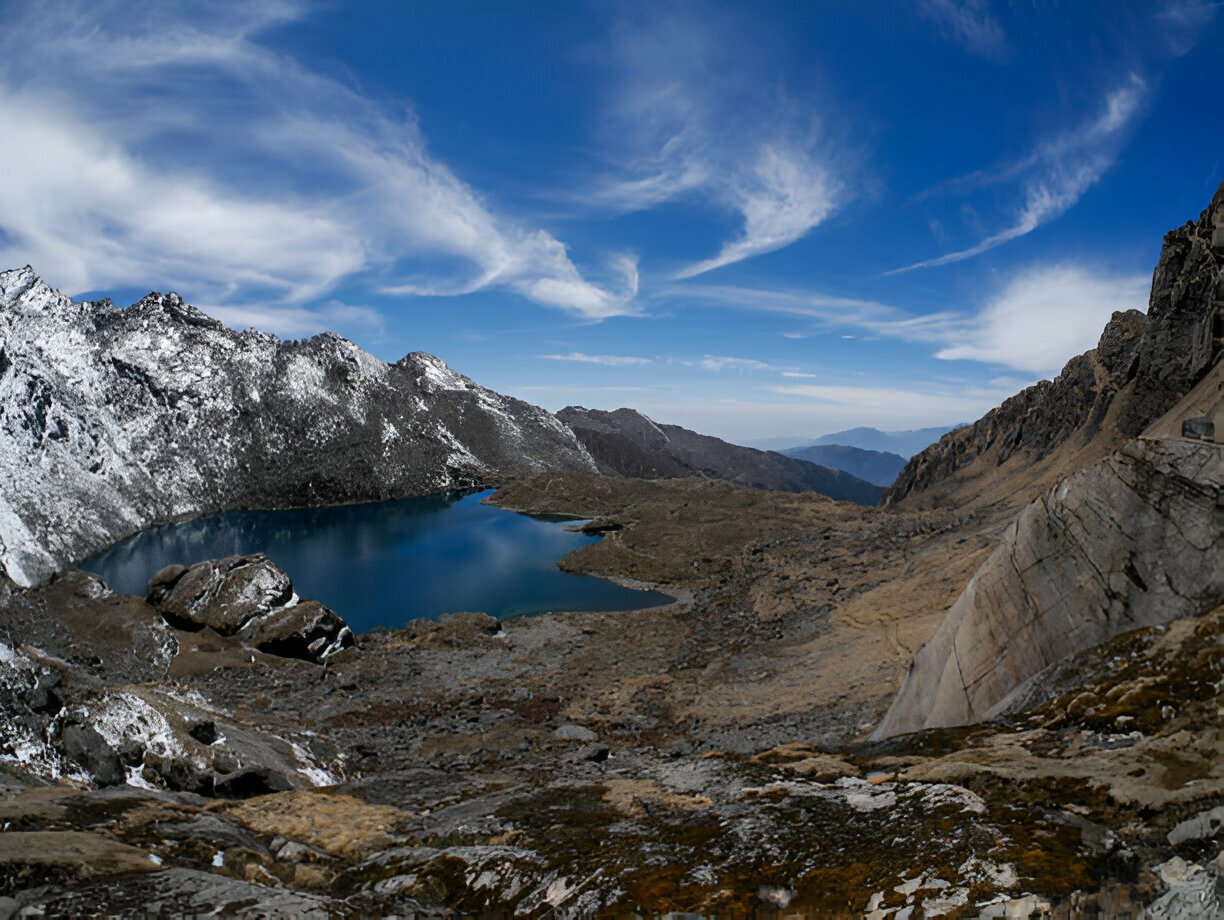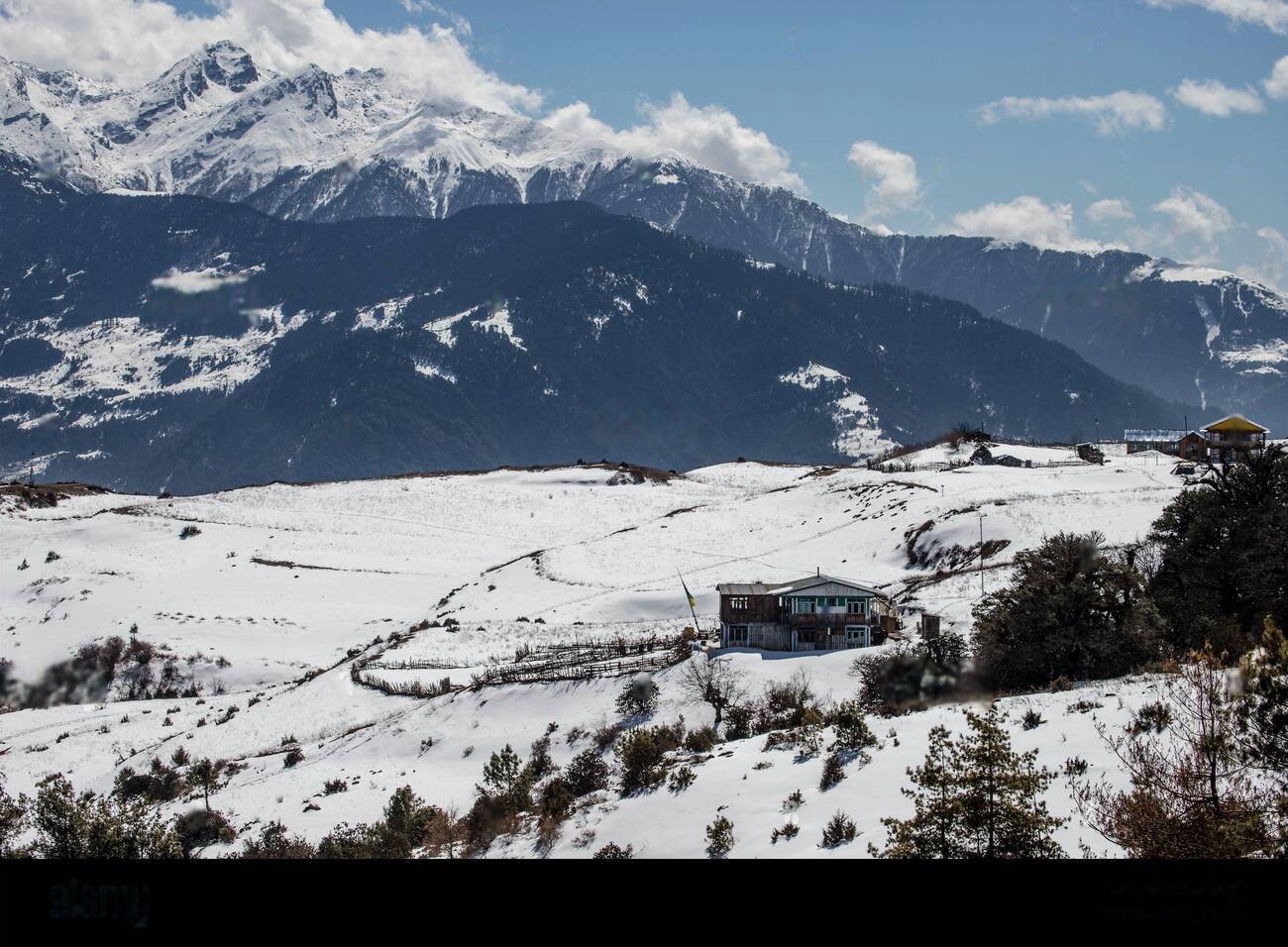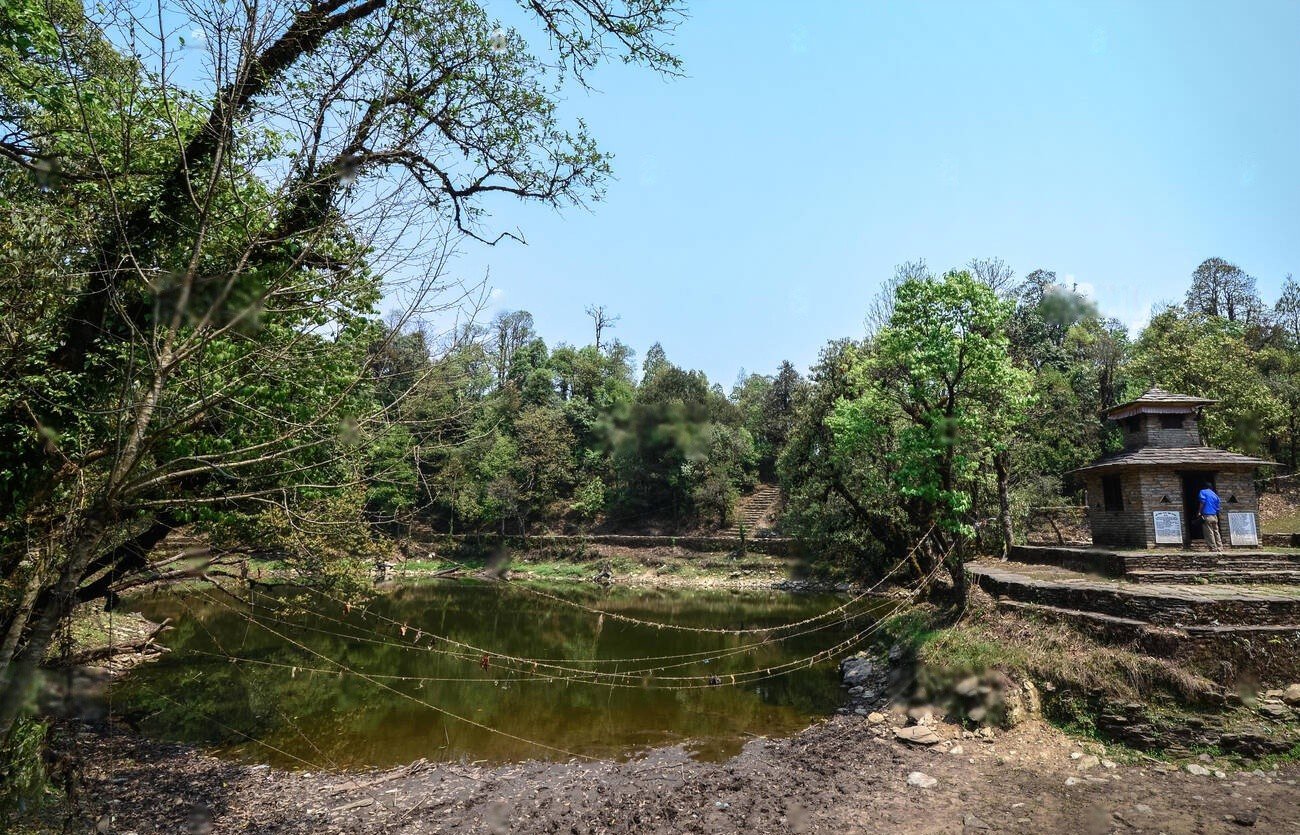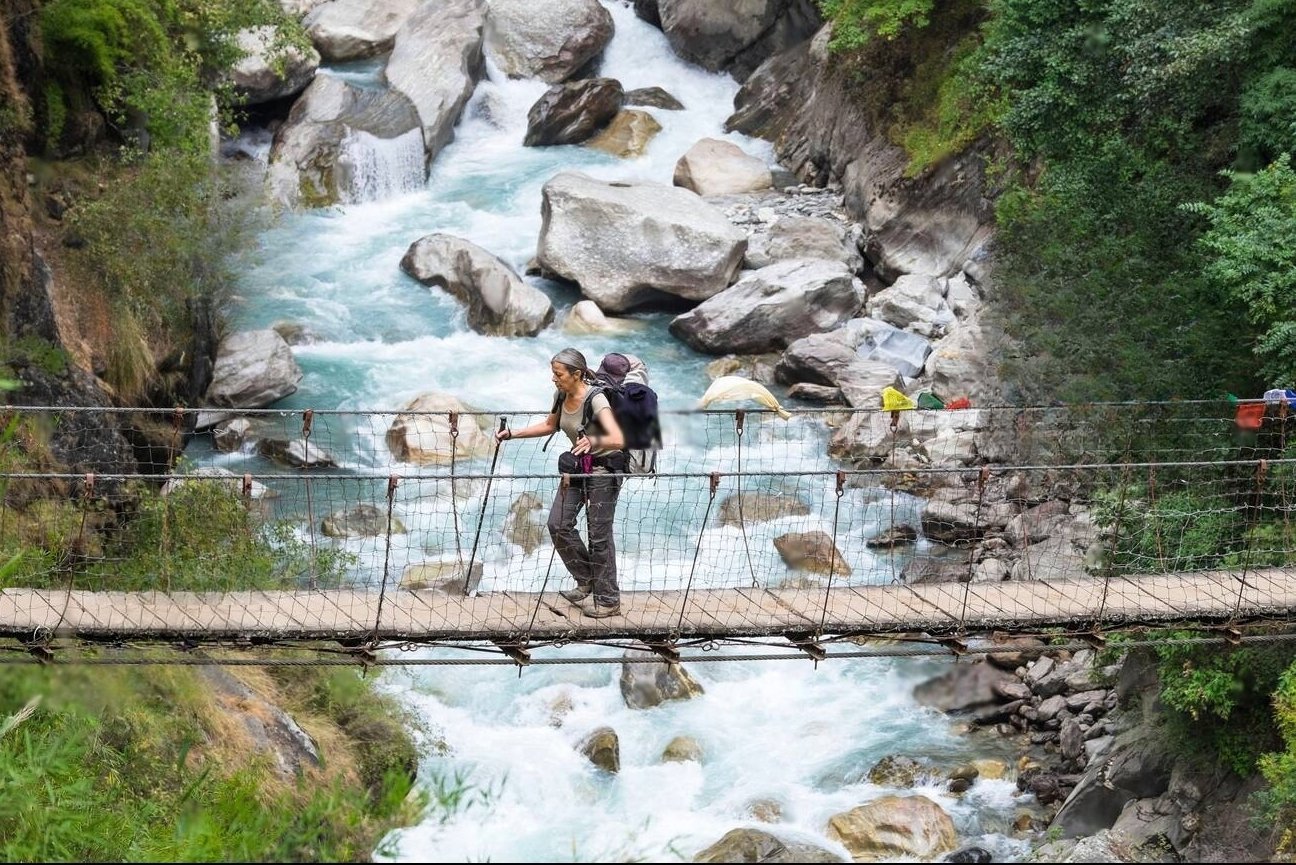 About this Trip
About this Trip
The Tsum Valley Trek represents a rare opportunity to experience one of the last truly pristine Himalayan cultures. What makes this journey extraordinary is the perfect harmony of natural splendor, spiritual heritage, and cultural immersion in a region that has remained largely unchanged for centuries.
As you ascend through the Budhi Gandaki Valley and eventually branch off into the Tsum Valley, the landscape transforms dramatically. The trail begins in subtropical lowlands with terraced fields and picturesque villages, then transitions through dense forests of pine, oak, and rhododendron. Eventually, the terrain opens to reveal wide, U-shaped valleys with traditional stone villages set against the backdrop of snow-capped peaks. The Tsum Valley's unique geography, nestled in a high-altitude basin, created a natural isolation that has preserved its cultural identity.
The cultural dimension of this trek is unparalleled. The Tsumba people, of Tibetan origin, practice a form of Buddhism dating back to pre-Buddhist Bon traditions. Ancient monasteries like Mu Gompa and Rachen Gompa house precious artifacts, ancient texts, and traditional art forms maintained through generations. One of the valley's most distinctive features is the practice of "ahimsa" or non-violence toward all living creatures – the entire valley is a designated zone where hunting and slaughtering animals is prohibited, making wildlife encounters more frequent than in other trekking regions.
Physically, the trek presents moderate challenges with gradual ascents and limited extreme altitudes compared to other Himalayan treks. The well-spaced villages provide comfortable stopping points, allowing trekkers to acclimatize naturally while enjoying authentic cultural interactions. The circular route offers continuously changing perspectives of the surrounding peaks and landscapes, with very few sections repeated on the return journey.
Throughout the adventure, the genuine hospitality of the Tsumba people creates meaningful connections. Sharing tea in traditional stone houses, participating in Buddhist ceremonies, and learning about unique local customs adds profound depth to the trekking experience that goes well beyond the physical journey.
The Tsum Valley Trek represents a rare opportunity to experience one of the last truly pristine Himalayan cultures. What makes this journey extraordinary is the perfect harmony of natural splendor, spiritual heritage, and cultural immersion in a region that has remained largely unchanged for centuries.
As you ascend through the Budhi Gandaki Valley and eventually branch off into the Tsum Valley, the landscape transforms dramatically. The trail begins in subtropical lowlands with terraced fields and picturesque villages, then transitions through dense forests of pine, oak, and rhododendron. Eventually, the terrain opens to reveal wide, U-shaped valleys with traditional stone villages set against the backdrop of snow-capped peaks. The Tsum Valley's unique geography, nestled in a high-altitude basin, created a natural isolation that has preserved its cultural identity.
The cultural dimension of this trek is unparalleled. The Tsumba people, of Tibetan origin, practice a form of Buddhism dating back to pre-Buddhist Bon traditions. Ancient monasteries like Mu Gompa and Rachen Gompa house precious artifacts, ancient texts, and traditional art forms maintained through generations. One of the valley's most distinctive features is the practice of "ahimsa" or non-violence toward all living creatures – the entire valley is a designated zone where hunting and slaughtering animals is prohibited, making wildlife encounters more frequent than in other trekking regions.
Physically, the trek presents moderate challenges with gradual ascents and limited extreme altitudes compared to other Himalayan treks. The well-spaced villages provide comfortable stopping points, allowing trekkers to acclimatize naturally while enjoying authentic cultural interactions. The circular route offers continuously changing perspectives of the surrounding peaks and landscapes, with very few sections repeated on the return journey.
Throughout the adventure, the genuine hospitality of the Tsumba people creates meaningful connections. Sharing tea in traditional stone houses, participating in Buddhist ceremonies, and learning about unique local customs adds profound depth to the trekking experience that goes well beyond the physical journey.
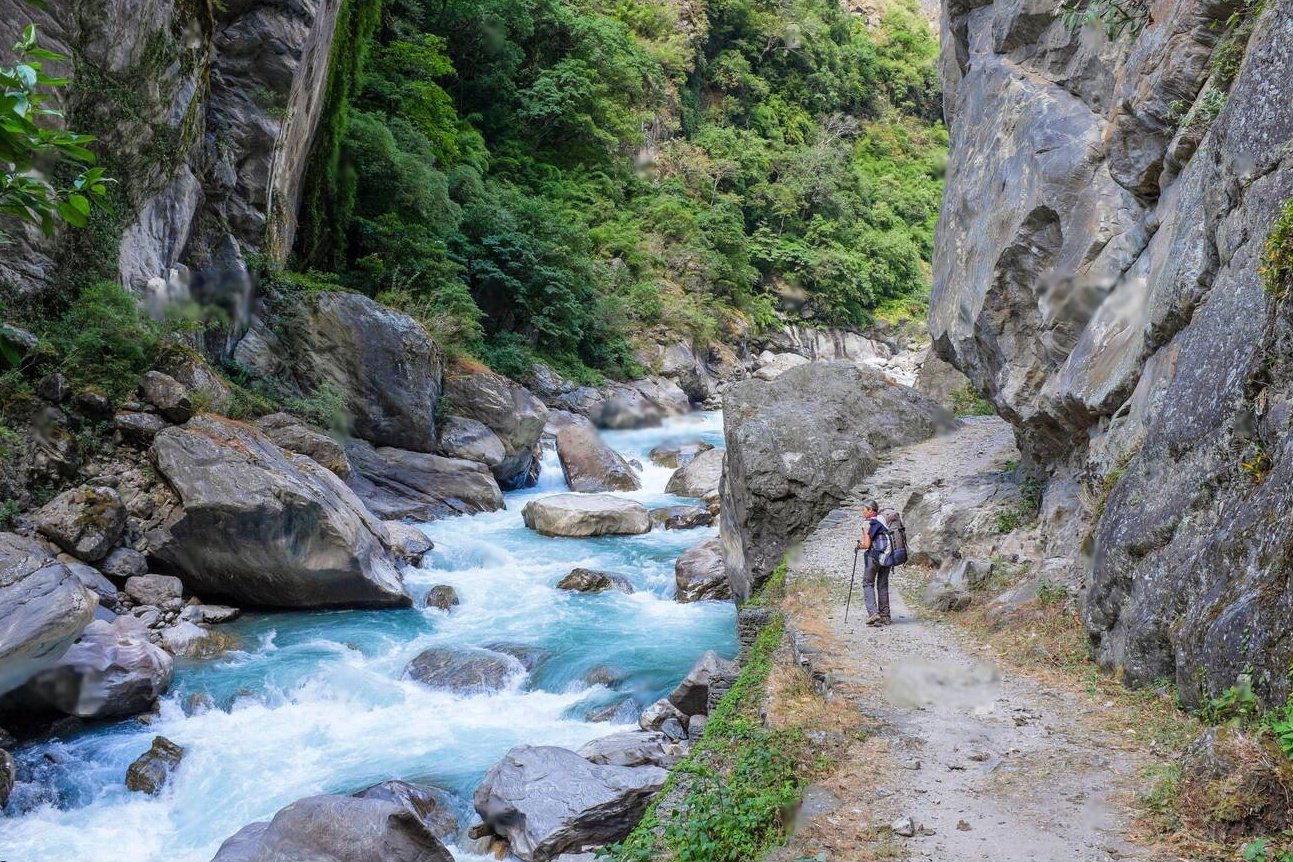
From $0
Price Varies from Group Size
Success
Here goes about why the success toast occurred.
 Itinerary
Itinerary
A culturally rich trek into the secluded Tsum Valley, nestled in the Manaslu region, known for ancient Buddhist monasteries, Tibetan-influenced villages, and serene Himalayan landscapes untouched by modern development.
Arrival in Kathmandu (1,400m)
Your adventure begins with arrival in Kathmandu, Nepal's vibrant capital. After airport pickup, settle into your hotel and attend a pre-trek briefing with your guide. Explore historic sites, gather last-minute supplies from Thamel, and sample authentic Nepali cuisine.
Experience Highlights:
- Historic temples and stupas of Kathmandu
- Vibrant shopping in Thamel district
- Authentic Nepali cuisine
- Pre-trek briefing with your experienced guide
- Cultural immersion in Nepal's capital
Your Accomodations
Dwarika's Hotel
Dwarika’s Hotel in Kathmandu is a landmark of luxury that combines Nepal’s rich cultural...
View in DetailKathmandu to Soti Khola (710m)
Begin your journey with an early morning drive from Kathmandu to Soti Khola, following the Prithvi Highway along the Trishuli and Marshyangdi rivers. Enjoy picturesque views of terraced farmlands, rushing rivers, and distant glimpses of the Annapurna and Manaslu ranges.
Experience Highlights:
- Scenic 7-8 hour drive through central Nepal
- Views of terraced farmlands and rural villages
- Riverside journey along Trishuli and Marshyangdi
- First glimpses of the Himalayan ranges
- Transition from urban to remote rural landscapes
Your Accomodations
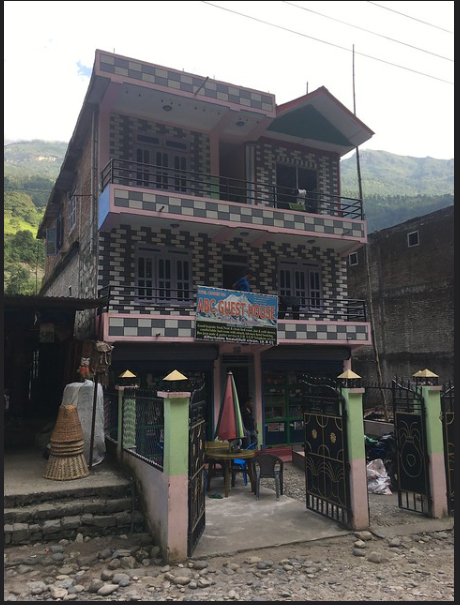
ABC Guest House
Lorem ipsum dolor sit amet, consectetur adipiscing elit. Sed do eiusmod tempor incididunt ut labore...
View in DetailSoti Khola to Machha Khola (900m)
Your first trekking day follows the Budhi Gandaki River through alternating forested paths and rocky riverside sections. Pass through small villages and terraced fields, crossing suspension bridges with thrilling views of the river below.
Experience Highlights:
- First day of actual trekking on the trail
- Thrilling suspension bridge crossings
- Riverside trails along the Budhi Gandaki
- Traditional farming villages and terraced fields
- Varied terrain through forests and rocky sections
Your Accomodations
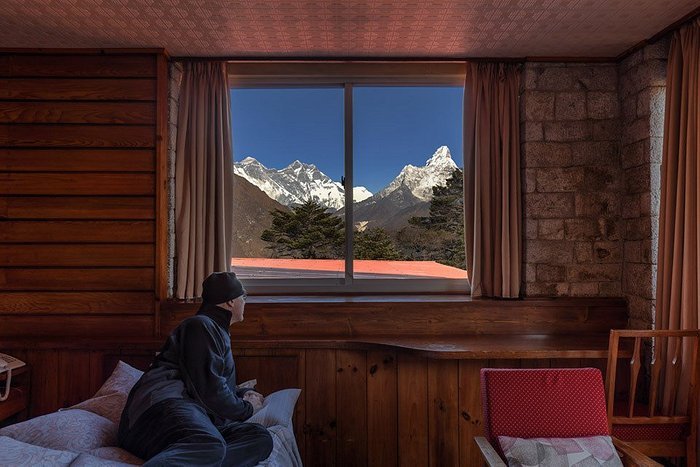
Larkey Guest House
Lorem ipsum dolor sit amet, consectetur adipiscing elit. Sed do eiusmod tempor incididunt ut labore...
View in DetailMachha Khola to Jagat (1,340m)
Today's journey continues following the Budhi Gandaki River through increasingly dramatic gorges. Visit the hot springs at Tatopani for a therapeutic dip, then climb steeply up stone stairs before descending to Jagat, an official entry point to the Manaslu Conservation Area.
Experience Highlights:
- Therapeutic hot springs at Tatopani
- Dramatic river gorges and deepening valleys
- Stone stair sections offering physical challenge
- Entry into the Manaslu Conservation Area
- Increasing elevation with changing vegetation
Your Accomodations
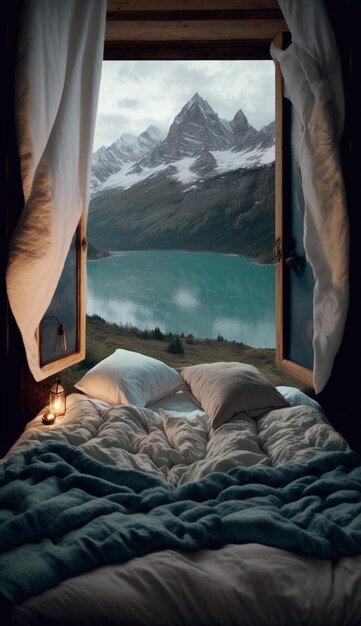
New Mongolian Cottage & Lodge
Lorem ipsum dolor sit amet, consectetur adipiscing elit. Sed do eiusmod tempor incididunt ut labore...
View in DetailJagat to Lokpa (2,240m)
Trek through bamboo forests and cross the Budhi Gandaki several times before reaching the trail split at Ekle Bhatti. Follow the path branching east toward Tsum Valley, climbing steeply through magnificent pine and rhododendron forests with glimpses of Shringi Himal.
Experience Highlights:
- First foray into the restricted Tsum Valley region
- Magnificent pine and rhododendron forests
- First views of Shringi Himal
- Significant elevation gain (900m)
- Decreasing signs of modern influence
Your Accomodations

Chum Gateway Hotel
Lorem ipsum dolor sit amet, consectetur adipiscing elit. Sed do eiusmod tempor incididunt ut labore...
View in DetailLokpa to Chumling (2,386m)
Begin with a descent into a deep gorge followed by a steep climb through pine and rhododendron forests. Cross the Siyar Khola (river) and continue upward to reach Lower Tsum Valley and the village of Chumling, your first authentic encounter with Tsumba culture.
Experience Highlights:
- Visit to the old Chumling Gompa (monastery)
- First authentic encounter with Tsumba culture
- Traditional stone houses with unique architecture
- Spectacular views of Ganesh Himal
- Deep gorge and river crossings
Chumling to Chhokang Paro (3,031m)
Journey deeper into the Upper Tsum Valley, crossing a suspension bridge before climbing gradually through forests and traditional Tibetan-style villages. Visit the Gho Valley's monasteries, Panago Gumba and Lung Dang Gumba – on the way to Chhokang Paro, the main village of upper Tsum.
Experience Highlights:
- Visit to two ancient monasteries in Gho Valley
- Traditional Tibetan-style villages
- Superb Himalayan mountain views
- Significant elevation gain (645m)
- Entry into Upper Tsum Valley cultural region
Chhokang Paro to Nile/Chhule (3,361m)
Trek through traditional Tibetan-style villages with extensive farming terraces. Visit Rachen Gompa nunnery, home to over 80 nuns, and continue to Milarepa's Cave, named after the famous Tibetan saint who meditated here, before reaching the twin villages of Nile and Chhule.
Experience Highlights:
- Rachen Gompa nunnery (established 1905)
- Milarepa's Cave with its spiritual significance
- Traditional Tibetan farming communities
- Buddhist statues, paintings, and philosophical texts
- Broad valley setting beneath soaring peaks
Day Trip to Mu Gompa (3,700m) and Dhephyudonma Gompa
Embark on a day trip to Mu Gompa, one of the oldest monasteries in the region, dating back to 1895. The round-trip trek climbs through yak pastures with breathtaking mountain vistas. Optionally continue to Dhephyudonma Gompa, considered the oldest monastery in Tsum Valley.
Experience Highlights:
- Mu Gompa monastery dating back to 1895
- Interaction with resident Buddhist monks
- Breathtaking high-altitude mountain panoramas
- Traditional yak pastures and alpine terrain
- Optional visit to ancient Dhephyudonma Gompa
Nile/Chhule to Burji (3,280m)
Begin a circular return route via the western valley. Follow the high trail to Burji, a small settlement with spectacular views of Ganesh Himal, Himalchuli, and Baudha Himal ranges. Pass through high pastures used by yak herders and unique meditation caves used by Buddhist practitioners.
Experience Highlights:
- Spectacular panoramic mountain views
- High pastures used by seasonal yak herders
- Ancient Buddhist meditation caves
- Less-traveled western valley route
- Sense of remote wilderness and solitude
Burji to Chumling (2,386m)
Descend through changing vegetation zones, offering different perspectives of the valley and mountains than your ascent route. Pass through small, seldom-visited settlements and agricultural terraces where traditional farming methods remain unchanged for centuries.
Experience Highlights:
- Changing vegetation with decreasing altitude
- Seldom-visited traditional settlements
- Century-old farming techniques and terraces
- New perspectives of valleys and mountains
- Rejoining the main Tsum Valley circuit
Chumling to Philim (1,570m)
Exit the Tsum Valley, trekking back to Lokpa and continuing to Philim. This larger settlement on the main Manaslu Circuit trail features a Tibetan-style Buddhist monastery and a Japanese-funded school, offering a chance to readjust to more populated areas.
Experience Highlights:
- Tibetan-style Buddhist monastery in Philim
- Japanese-funded school and community projects
- Transition back to more populated areas
- Integration with the main Manaslu Circuit
- Significant descent with changing ecosystems
Philim to Khorlabesi (970m)
Continue your descent through the Budhi Gandaki Valley, passing through Sirdibas and Jagat. The scenery transitions back to subtropical vegetation with banana plants, terraced rice fields, and increasingly Hindu cultural influences as you approach Khorlabesi.
Experience Highlights:
- Transition to subtropical vegetation
- Terraced rice fields and banana plantations
- Shift from Buddhist to Hindu cultural influences
- Long but rewarding day of trekking
- Dramatic decrease in elevation
Khorlabesi to Soti Khola (710m)
Your final day of trekking is a relatively easy journey back to Soti Khola, completing your circuit. The trail follows the river through small farming communities and lush forests, allowing time to appreciate the warmer climate and lusher vegetation of the lower regions.
Experience Highlights:
- Completion of the Tsum Valley circuit
- Lush subtropical forests and vegetation
- Traditional farming communities
- Final river and bridge crossings
- Celebration with guides and porters
Soti Khola to Kathmandu
Board your return vehicle for the drive back to Kathmandu. The journey provides time for reflection on your experiences in one of Nepal's most pristine cultural territories. Upon arrival, enjoy the comforts of your hotel and perhaps treat yourself to a celebratory dinner.
Experience Highlights:
- Scenic return journey through Nepal's countryside
- Time for reflection on your trek experiences
- Return to urban comforts of Kathmandu
- Celebratory dinner options in the city
- Shopping opportunities for souvenirs
Departure from Kathmandu
Your Tsum Valley adventure concludes with a transfer to Kathmandu International Airport for your departure flight. Depending on your schedule, you may have time for last-minute shopping or sightseeing in Kathmandu before departing Nepal.
Experience Highlights:
- Final opportunity for Kathmandu sightseeing
- Last-minute souvenir shopping
- Reflection on your Himalayan adventure
- Airport transfer and departure assistance
- Memories and photographs to take home
 Services
Services
Includes
- Special restricted area permit for Tsum Valley
- Manaslu Conservation Area permit
- TIMS card (Trekkers' Information Management System)
- Specialized bilingual guide knowledgeable in local Buddhist traditions
- Private transport between Kathmandu and Soti Khola
- Daily meals on the trek: breakfast, lunch, and dinner
- Services of an experienced guide and porter during the trek
- Accommodation throughout the trek (lodges, guesthouses, and tea houses)
- All government taxes and official expenses
Excludes
- Additional accommodation due to unexpected delays or changes
- Comprehensive travel and medical insurance for the trip
- Gratuities for the guides, porters, and trekking support staff
- International flights and Nepal entry visa fees
- Personal trekking equipment and gear (sleeping bags, jackets, etc.)
- Personal expenses including snacks, drinks, hot showers, and charging
- Emergency evacuation services
 Good To Know
Good To Know
Training for 2-3 months with regular cardio and hill walking is recommended for this moderate trek. Respect local Buddhist traditions by walking clockwise around religious monuments and not photographing inside monasteries without permission. Carry small denomination Nepalese rupees as there are no ATMs in the valley and credit cards are not accepted. Pack conservatively for varying temperatures and bring water purification methods as bottled water isn't available in remote areas. Consider bringing small gifts like school supplies or medical items for remote communities rather than distributing candy to children.
Wildlife Encounters
Himalayan tahr
Musk deer in forested regions
Blue sheep (bharal)
Himalayan black bear (lower elevations)
Snow leopard (extremely rare)
Red panda (in bamboo forests)
Numerous bird species including Impeyan pheasant (Danphe)
Various high-altitude birds including lammergeier (bearded vulture)
Alpine wildflowers (spring season)
 Reviews
Reviews
 FAQs (Frequently Asked Questions)
FAQs (Frequently Asked Questions)
Do I need trekking experience?
Prior trekking experience is beneficial but not essential. Regular fitness training for 2-3 months before the trek is recommended, focusing on cardiovascular endurance and uphill walking.
What is the best time of year for this trek?
March to May (spring) and September to November (autumn) offer the best conditions. Spring features blooming rhododendrons and more active wildlife, while autumn typically has clearer mountain views and pleasant temperatures.
Do I need special permits?
Yes, Tsum Valley is a restricted area requiring special permits that must be arranged through a registered trekking agency. You'll need the Tsum Valley Restricted Area Permit, Manaslu Conservation Area Permit, and TIMS card.
How do I prevent altitude sickness?
The maximum altitude on this trek is moderate compared to other Himalayan treks, but proper acclimatization is still important. Stay hydrated, ascend slowly, and communicate any symptoms to your guide immediately. The itinerary is designed with appropriate acclimatization stops.
What type of accommodation can I expect?
Tea houses in Tsum Valley are basic compared to more popular trekking routes. Expect simple twin rooms, shared bathroom facilities (usually outside), and common dining areas. In more remote sections, accommodation can be very rustic.
Is it possible to shower during the trek?
Basic cold showers are available in most tea houses, with occasional hot showers available for an additional fee in larger villages. Many trekkers rely on wet wipes and hand sanitizer for personal hygiene during much of the trek.
How reliable is the WiFi and phone connectivity?
Extremely limited. There is almost no WiFi in the Tsum Valley, and mobile network coverage is very sporadic. Consider this trek a digital detox and inform family and friends that you'll be out of contact for much of the journey.
Can dietary restrictions be accommodated?
Vegetarian diets are easily accommodated, but strict vegan, gluten-free, or other specific diets may be challenging. Tea houses offer a limited menu, typically consisting of dal bhat (rice, lentil soup, and vegetables), noodles, potatoes, and simple soups. Bringing supplementary food items is recommended for specialized diets.
How much should I budget for the trek?
Beyond the package cost, budget approximately $10-15 per day for additional snacks, drinks, hot showers, and any small souvenir purchases from local villages. Prices increase with remoteness.
How much should I tip the guides and porters?
Tipping is customary and appreciated. A general guideline is $10-15 per day for guides and $5-8 per day for porters, typically given at the end of the trek.
